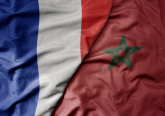 The Mediterranean Sea is today’s most dangerous border between countries not at war with each other. Just last week, 300 persons departing Libya on four rubber dinghies have gone missing at sea, after drifting for days without food and water. News reports in the past six months have regularly commented upon the rising number of persons disembarking on Italy’s coastline – benefiting from its search and rescue operation Mare Nostrum. Despite the increase in new arrivals from 33,000 to 200,000 from 2013-2014, the life-saving mission has now been discarded. Italian policy makers believe Mare Nostrum is as responsible for overcrowded reception centres as it is for the rising number of persons risking their lives at sea. But is it truly to blame for the surge? Because more than 50 per cent of arrivals are either Syrian or Eritrean, news commentators have provided some other potential explanations. Some point to the protracted conflict in the Middle East, whilst others highlight the strain on neighbouring Jordan, Lebanon and Iraq in continuing to receive thousands of Syrian refugees. “Poverty in Africa” is mentioned occasionally, and for the better informed, an oppressive military regime and indefinite conscription in Eritrea are to blame. Yet these supposed ‘causes’ of the latest wave in irregular migration to Europe are speculative at most and have in fact been ongoing for many years now.
The Mediterranean Sea is today’s most dangerous border between countries not at war with each other. Just last week, 300 persons departing Libya on four rubber dinghies have gone missing at sea, after drifting for days without food and water. News reports in the past six months have regularly commented upon the rising number of persons disembarking on Italy’s coastline – benefiting from its search and rescue operation Mare Nostrum. Despite the increase in new arrivals from 33,000 to 200,000 from 2013-2014, the life-saving mission has now been discarded. Italian policy makers believe Mare Nostrum is as responsible for overcrowded reception centres as it is for the rising number of persons risking their lives at sea. But is it truly to blame for the surge? Because more than 50 per cent of arrivals are either Syrian or Eritrean, news commentators have provided some other potential explanations. Some point to the protracted conflict in the Middle East, whilst others highlight the strain on neighbouring Jordan, Lebanon and Iraq in continuing to receive thousands of Syrian refugees. “Poverty in Africa” is mentioned occasionally, and for the better informed, an oppressive military regime and indefinite conscription in Eritrea are to blame. Yet these supposed ‘causes’ of the latest wave in irregular migration to Europe are speculative at most and have in fact been ongoing for many years now.
The irregular and mixed movement of persons across borders is arguably the most pressing international issue of our time, second perhaps only to terrorism. Yet the response of nations is too often reactionary and punitive towards individuals making the move, causing policies like Mare Nostrum to be cut short. By pinpointing the multiple ‘Push’ and ‘Pull’ factors at play in the regions concerned it is possible to generate fresh insight on the debate on South- North migration.
‘Push Factors’
For Syrians and Eritreans on the move, the situation at home is the key reason for flight. In Syria, there are immediate threats to life, regardless of which side of the conflict you are on. In Eritrea, an oppressive military regime and a lifeless economy force several thousand to walk across its land borders every month. Ruthless and indiscriminate conscription waves can also augment departures, as can changes in border surveillance, including the reported end to the notorious ‘shoot to kill’ policy.
Conditions in neighbouring countries of transit, such as Sudan, Ethiopia, Israel, Egypt or Libya, can have the greatest influence on whether migrants and refugees stay put. The fencing of Israel’s border in 2012-13 and destructive military raids in the Sinai Peninsula have severely dampened the trafficking of Eritreans through Egypt into Israel and opened up an alternative smuggling route via Khartoum to Libya. In Kenya, Ethiopia and Sudan, so called ‘encampment policies’ restrict the free movement of refugees to certain parts of the country with limited access to services, work or education, and consequently many are dissuaded from settling down.
In Egypt, after the removal from power of President Mohammed Morsi in 2013, there has been a series of attacks on Syrian refugees in Egypt, accused of siding with the now banned Muslim Brotherhood. At the time I was working for a legal aid NGO in Cairo and I saw how quickly the hospitality towards Syrians turned into street violence and arbitrary detention, forcing thousands of Syrians, who had only just begun to call Egypt home, to board boats all along Egypt’s Northern Coast and try their luck at Europe instead. Factional fighting in Libya this past year has also sparked a surge in boat departures.
‘Pull Factors’
Certainly Mare Nostrum may have played its part in giving smugglers the confidence to clear a backlog of persons waiting to make the dangerous Mediterranean crossing, but given most young Eritreans I meet tell me they will ‘die trying’, it is not the only reason for the rise in numbers last year.
Other unreported pull factors, emerging in recent years, fail to receive the attention they deserve in news reports or policy approaches to irregular South-North movement. Mass media has emphasized social and political inequalities, as BBC and Facebook now reach even the most remote African villages. Social networking connects the Eritrean child with his cousin in the Netherlands, and then again with potential smugglers, gaining precious information on the best migration routes, incumbent risks and the cost involved in advance. Ideas of ‘Europe’ proliferate the refugee camps. Boys swagger past me in Manchester United and Chelsea t-shirts calling one another ‘Rooney’ or ‘Beckham’, and I catch myself humming to the sound of a well-known Rihanna song blasting from a girl’s mobile phone as I stroll through a camp market in Sudan – unsurprised that 80 per cent of all asylum seekers and refugees will leave within three months of their arrival.
Where to now?
In October 2013 several hundred Eritreans were left to drown near Lampedusa, a small island off Italy. Another 4000 deaths at sea later and we are still searching for a ‘solution’ to irregular migration. The UNHCR for one is repositioning itself towards promoting human mobility solutions in recognition that refugees will move and move again in search of ‘effective protection’. Such protection demands more than freedom from refoulement, but respect for human rights akin to nationals in host countries, which is difficult to demand in developing countries struggling to secure basic rights even for their own citizens. Burden sharing remains necessary, not simply from within the EU to alleviate the burden on first countries of asylum like Italy, Greece and Malta, but among resettlement countries that should ensure slots are available to protracted refugee communities and not only to those fleeing the latest emergencies. Certainly there is no easy fix or robust indicators of causation for what the world is witnessing in the last year. But taking a step back and thinking carefully about the push and pull factors at play should help put us in the right direction.








No Comment